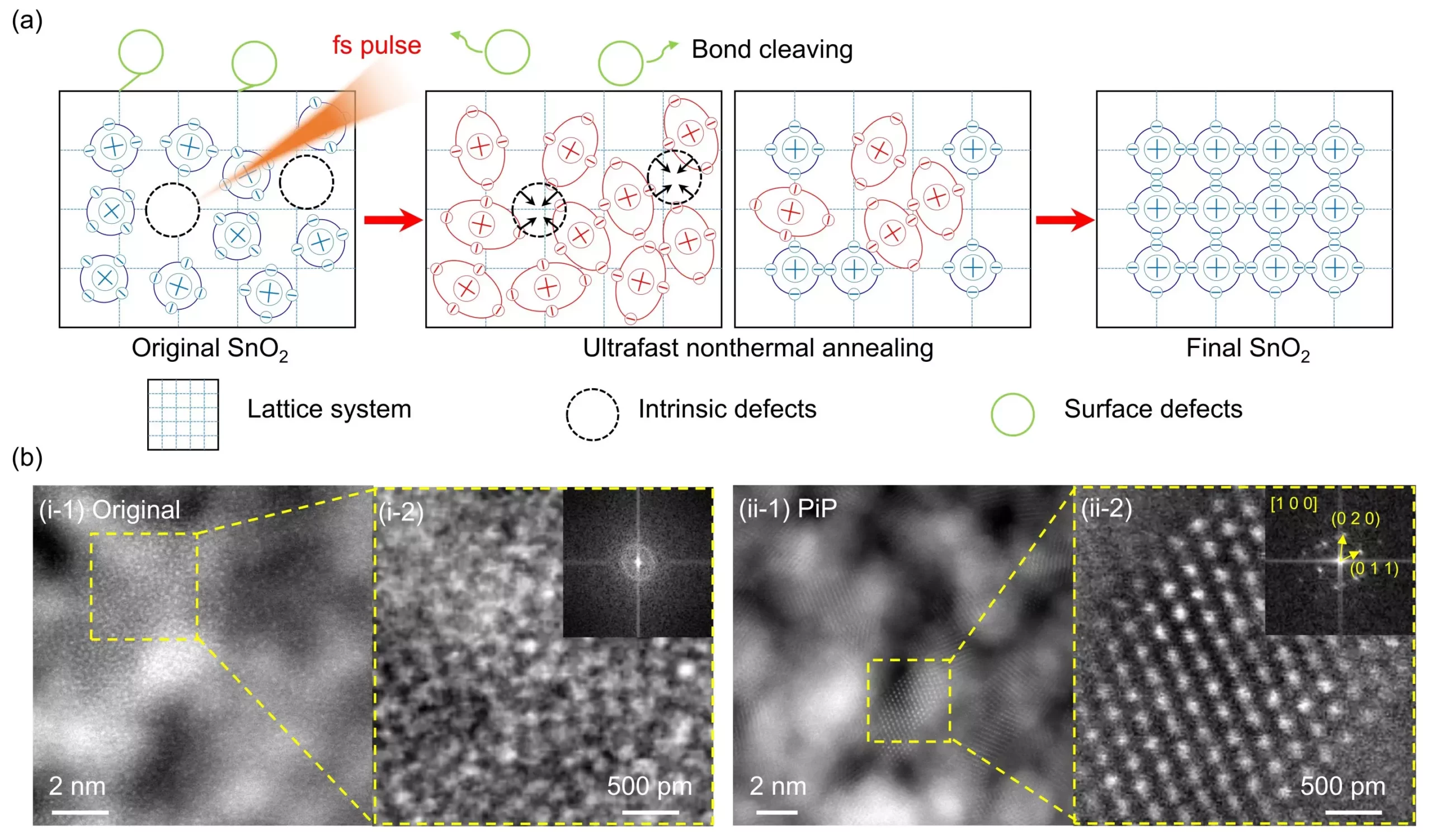The use of SnO2 as electron transport layers (ETLs) in perovskite solar cells (PSCs) has been popular due to its high transparency, electron mobility, and band alignment. However, traditional approaches to passivate defects in SnO2, such as thermal annealing and interface modification, have proven to be inefficient and unsuitable for flexible substrates. These methods require high-temperature treatment for extended periods, leading to time and energy consumption issues.
To address the shortcomings of conventional techniques, the Center of Femtosecond Laser Manufacturing for Advanced Materials and Devices, led by Prof. Xuewen Wang, developed a novel PiP strategy for SnO2 nanoparticle-based ETLs. This innovative approach utilizes a home-built femtosecond laser annealing system with a high-power femtosecond laser and a polygon scanning head. The high scanning speed of the laser beam allows for rapid annealing of SnO2 samples, making the process much more efficient than traditional heating methods.
High-resolution transmission electron microscope analyses conducted by the research team revealed that the PiP process induces a transformation in SnO2, shifting it from an amorphous phase to a crystalline phase. This transformation significantly improves the crystallinity of SnO2 and enhances defect passivation in the film. Other surface and optoelectronic characterization techniques also demonstrated improved performance of the SnO2 film after undergoing the PiP treatment.
Researchers Nianyao Chai and Xiangyu Chen tested the generality and effectiveness of the PiP technique with different perovskite absorber layers. By fabricating two representative perovskite-based PSCs, the team achieved impressive power conversion efficiencies (PCE) of 24.14% and 22.75%, respectively. Additionally, the scalability of the PiP technique was demonstrated by creating perovskite solar modules with six subcells connected in series, resulting in a PCE of 20.26%.
The PiP technique developed by Prof. Xuewen Wang and his team has shown significant improvements in the performance and stability of PSCs and perovskite solar modules. The efficient passivation of defects in SnO2 through ultrafast excitation processes has opened up new possibilities for the low-temperature manufacturing of high-efficiency PSCs. This groundbreaking study paves the way for the commercialization of advanced perovskite solar cell technologies.


Leave a Reply